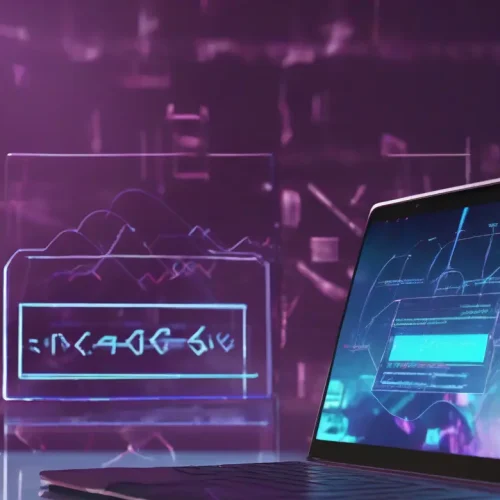Understanding eSIM Technology
In today’s connected world, eSIM (embedded SIM) technology is revolutionizing mobile connectivity. Unlike traditional plastic SIM cards, an eSIM is a digital chip embedded in your device, storing network identification data without the need for a physical card. This innovation offers unmatched convenience, flexibility, and sustainability, enabling users to switch operators or manage multiple profiles seamlessly. However, in Iran, the absence of official eSIM services creates significant challenges for users, particularly those with eSIM-only devices. This article explores eSIM’s benefits, its global rise, Iran’s current landscape, and solutions for users.
eSIM vs. Physical SIM: Key Differences
eSIMs differ from physical SIMs in several ways, impacting usability and functionality:
- Nature: Physical SIMs are removable plastic cards, while eSIMs are built into the device’s hardware, activated via software.
- Activation: Physical SIMs require manual insertion, whereas eSIMs are activated by scanning a QR code or entering details online.
- Multi-SIM Support: eSIM-enabled devices often support multiple profiles, allowing users to manage work and personal lines or international plans on one device.
- Durability and Design: eSIMs save internal phone space, enabling sleeker designs, and are less prone to physical damage.
- Portability: Transferring a physical SIM is straightforward, but moving an eSIM between devices involves a software process, which varies by operator.
Both technologies connect devices to mobile networks, but eSIMs offer greater flexibility, especially for frequent travelers and IoT device users.
The Global Rise of eSIM Technology
eSIM adoption is surging globally, driven by major manufacturers and telecom operators. Apple’s decision to release eSIM-only iPhones in the U.S. has accelerated this trend, signaling confidence in eSIM’s reliability. Other brands, like Samsung and Google, are also integrating eSIMs into smartphones, smartwatches, and IoT devices. In 2025, global eSIM shipments are projected to exceed 300 million units, with a 20% year-on-year growth .
eSIMs are critical for the Internet of Things (IoT), enabling seamless connectivity for devices like smartwatches, tablets, and connected cars. Telecom operators in over 100 countries now offer eSIM services, simplifying plan activation and enhancing user experience.
eSIM in Iran: Current Challenges
Despite global advancements, Iran lags in eSIM adoption. Domestic operators like MCI, Irancell, and Rightel do not yet offer official eSIM services as of August 2025. This creates significant hurdles for users, especially those with eSIM-only devices like certain iPhone models. Key challenges include:
- Lack of Operator Support: Without eSIM services, users with eSIM-only devices cannot connect to local networks for calls, SMS, or data.
- Device Limitations: eSIM-only phones become reliant on Wi-Fi, reducing their utility for mobile connectivity in Iran.
- Sanctions Impact: International sanctions limit access to global eSIM providers and infrastructure, hindering adoption.
These issues force users to seek workarounds, such as using secondary devices with physical SIMs or relying on Wi-Fi for communication.
eSIM for International Travel: A Practical Solution
While domestic eSIM services are unavailable, Iranians can leverage international eSIMs for foreign travel. Providers like Airalo, Holafly, and Nomad offer data-only eSIM plans that activate quickly via QR codes, eliminating the need to purchase local physical SIMs. For example, a 1GB daily plan for Europe costs around $5–$10, offering cost-effective connectivity compared to roaming (source: PCMag).
Benefits for Travelers:
- Convenience: Activate plans online without visiting stores or swapping SIMs.
- Flexibility: Choose plans based on trip duration and data needs.
- Cost Savings: Avoid high roaming fees from domestic operators.
However, users must verify coverage, as some international eSIMs may have limited roaming agreements in certain countries.
Sending Internet Assistance via eSIM
A unique application of eSIMs is enabling internet access for Iranians through international providers. People outside Iran can purchase data-only eSIM plans and share activation details (e.g., QR codes) with users in Iran. This method, popularized during internet restrictions, allows recipients with eSIM-compatible devices to access the internet via global networks.
Limitations:
- Data-Only Plans: These eSIMs typically exclude local phone numbers, calls, or SMS, relying on apps like WhatsApp or Telegram for communication.
- Coverage Issues: Connection quality depends on roaming agreements, which may be inconsistent in Iran.
- Cost: Long-term use of international eSIMs can be expensive compared to local tariffs.
The Future of eSIM in Iran
The global shift toward eSIMs suggests that Iran’s telecom sector will eventually adopt this technology. Supporting eSIMs would benefit users by:
- Enabling connectivity for eSIM-only devices.
- Simplifying operator switches and profile management.
- Supporting IoT growth, such as smart city initiatives.
However, adoption requires infrastructure upgrades, regulatory approval, and solutions to sanction-related barriers. Iran’s exploration of alternative systems like China’s BeiDou for navigation indicates potential for localized eSIM solutions. While no official timeline exists, industry experts anticipate initial eSIM offerings by major operators by 2027.
Conclusion: Navigating eSIM Challenges in Iran
eSIM technology offers unparalleled convenience and flexibility, transforming mobile connectivity worldwide. However, Iran’s lack of domestic eSIM services limits its benefits, particularly for users with eSIM-only devices. International eSIMs provide a workaround for travelers and those receiving internet assistance, but challenges like cost and coverage persist. As Iran’s telecom sector evolves, adopting eSIMs will be crucial to meet user demands and align with global trends. Until then, users must carefully consider device compatibility and explore alternative connectivity options.






